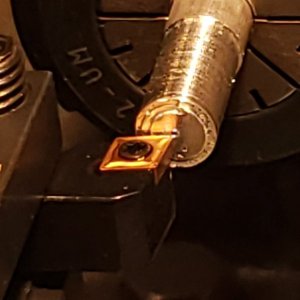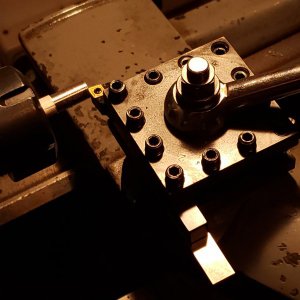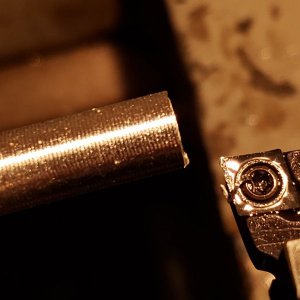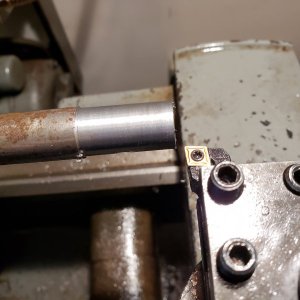I have a very nice update on my problem of having a 3/8" tool holder be 1/8" too high in my 4-way TP on my Logan 820. JFL4006 offered to mill the 1/8" off for me, and did! He was smarter than this newbie and said he'd take a bit more to ensure there'd be enough, and gave me a whole bunch of shims as well...so, at this point I'm really happy to report that the holder fits with .065" to spare, and I shimmed that, and now it's dead center.
Thanks again John, I'm deeply appreciative. This is a great board...
Yes, I know it's a roughish cut. I'm having a spot of trouble getting the power feed going. I have not been able to find a detailed description of how to do it, what the correct combination of clutch, feed reverse lever, power feed lever needs to be and how each works. I've seen a bunch of videos and read the original manual, but either I"m being thick or none of them tell me the sequence of switches I need to make to go from manual to powered. Help please? Does such a video exist and I'm just missing it?
Many thanks, best for Christmas,
Tim


Thanks again John, I'm deeply appreciative. This is a great board...
Yes, I know it's a roughish cut. I'm having a spot of trouble getting the power feed going. I have not been able to find a detailed description of how to do it, what the correct combination of clutch, feed reverse lever, power feed lever needs to be and how each works. I've seen a bunch of videos and read the original manual, but either I"m being thick or none of them tell me the sequence of switches I need to make to go from manual to powered. Help please? Does such a video exist and I'm just missing it?
Many thanks, best for Christmas,
Tim






